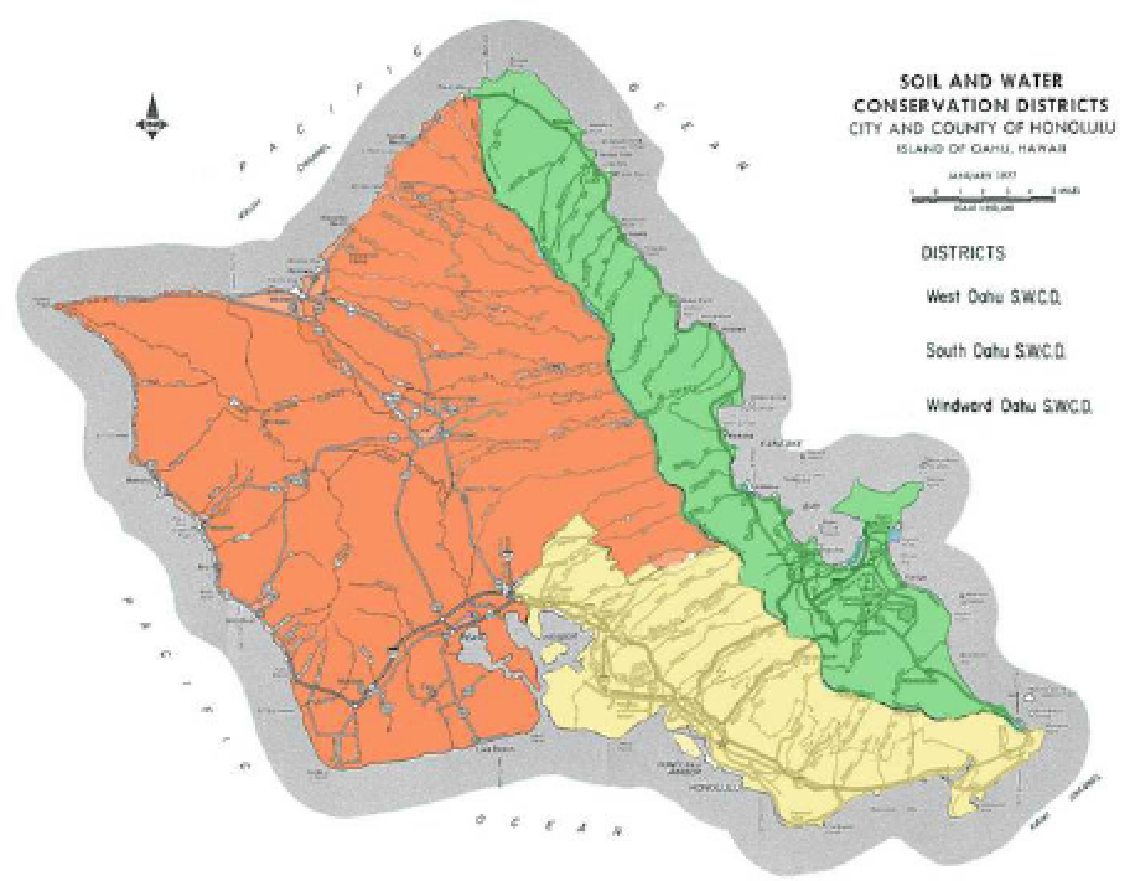Windward District
This is the area that enacted key characters in the traditional, historical, and mythological past. The localities of Ko’olaupoko, Kanehoalani, and Ko’olauloa, were home to Wakea, and Haumea (Papa), who bore Haloa-naka, the older brother of Haloa. (Handy and Handy, 1971)
This area was an early center for colonization, and as a result, was agriculturally rich for taro and sweet potato. The boarding section of the Ko’olau range provided a variety of geographic exposures due to low gaps toward the southern end of the range. These are the peaks of the Manolua, Kalihi, Nu’uanu, and Manoa Valleys. (Handy and Handy, 1971)
ca 1935-uh library "aloha hawaii scrapbook"
nuuanu-pali ca 1935-uh library "aloha hawaii scrapbook"
The Waimanalo Sugar Company, established in 1878, was most associated with the Mauniawili ditch. This ditch system continues to serve farmers in Waimanalo with less than 54 million gallons per moth. The Waimanalo system required frequent and costly repairs, and eventually was replaced with PVC in recent times. The Waimanalo Sugar Company ceased operations in 1947. (Wilcox, 1996)
No location: ca 1900 Uh library "hawaiian photo album"
Ko’olaupoko, the three northern ahupuua of Waikane, Hakip’u, and Kualoa are comprised of a bay and reef coastline, which allows cultivation up to the shore line. This location historically provided ample water for wet and streamside taro cultivation, fishponds and pools, and sloping land ideal for sweet potato cultivation. Kanehoalani, the center of myths and legends, serves as the intermediary between Ko’olaupoko and Ko’olauloa. (Handy and Handy, 1971)
Formerly known as Paliku, the Kualoa area was known to provide paper mulberry for tapa cloth. Although a historic lo’i was found in the area, not much taro was thought to have grown there, due to a lack of streams. However extensive taro was thought to have grown in the valley north of Kaneholani, or Ka’a’awa as well as Kahana. This heavily terraced area also grew upland sweet potato and coconut along the shore. Kahana also provided breadfruit, Hawaiian bamboo, and numerous fish ponds. (Handy and Handy, 1971)
In 1890, James Castle and Alexander Yound started the Kahuku Sugar Plantation on land leased by James Campbell. With water supplied by entirely groundwater sources, the Kahuku Plantation Company expanded to Punalu’u in 1906, and the Punalu’u ditch system. After expanding to the Lai’e Plantation agricultural lands, the parent company A&B closed the Kahuku Plantation in 1971. (Wilcox, 1996)
ca 1900-uh library "hawaiian photo album"
ca 1900-uh library "hawaiian photo album"
Thank you to the UH Library for hosting these wonderful historic photos used for our "SWCD History" section.
More information about the UH Library Historic Photo Collections can be found here:











